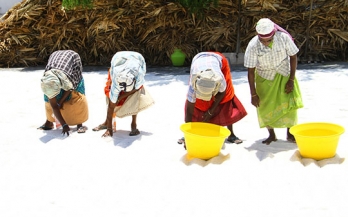- 08/06/2018
The objective of this study was to examine the influence of improved information and educational messages on outer packaging of a micronutrient powder (MNP), locally known as “Taburia”, on knowledge and adherence to recommended use.
- 12/04/2017
Household coverage with iodized salt was assessed in 10 countries that implemented Universal Salt Iodization.
- 24/05/2013
The purpose of this study was to determine the overall prevalence of vitamin D and calcium deficiencies in women and young children and their nutritional related risk factors.
- 12/04/2017
A spatially representative statewide survey was conducted in Rajasthan, India to assess household coverage of atta wheat flour, edible oil, and salt. An even distribution of primary sampling units were selected based on their proximity to centroids on a hexagonal grid laid over the survey area.
- 01/11/2018
A cross-sectional survey was undertaken to estimate household iodised salt coverage at national and sub-national levels in India.
- 08/11/2016
Poor complementary feeding practices among infants and young children in Côte d’Ivoire are major contributing factors to the country’s high burden of malnutrition. The objective of the current research was to assess various levels of coverage of the program and to identify coverage barriers.
- 05/12/2016
This commentary aims to discuss the multiple ways in which private sector can leverage its expertise to improve nutrition in general, and complementary feeding in particular.
- 01/10/2018
The objective of this study was to assess the global prevalence and disease burden of vitamin D deficiency, and population‐based strategies to improve vitamin D status, particularly in low‐ and middle‐income countries
- 01/12/2012
The purpose of this study was to develop and test a model to procure premix through a transparent and efficient process in which an adequate level of quality is guaranteed and a financial mechanism is in place to support countries or specific target groups when there are insufficient resources to cover the cost of premix.
- 01/10/2011
As a highly bioavailable iron compound, sodium iron (iii) ethylenediaminetetraacetate (NaFeEDTA) has been recommended as a food additive for fortification. The objective of this study was to calculate the dosage of NaFeEDTA for fortifying complementary foods assuming different population prevalences of underweight.









